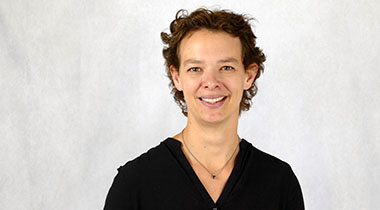User-Centered Design (UCD)
UCD can be used to create solutions that meet the user's needs. In order to understand the user, we observe closely and ask specific questions. This allows us to specify requirements precisely. Based on the knowledge gained, we design tailor-made solutions that we evaluate empirically, thus optimising usability in a continuous process.
Your Benefits

Increase the cost-effectiveness of the application

Save development time

Avoid change requests

Increase sustainability through acceptance

Generate project success through attractive, efficient solutions

Minimise the learning curve and error rate
Mit den Experten von con terra haben wir die Benutzerfreundlichkeit unserer öffentlichen 'Earth Observation Web Services' gezielt optimiert.
Michael Schick - EUMETSAT
The challenge
The success of digital solutions is based on their usability and the user experience (UX). The more precisely the expectations for a product are met, the more efficient and enjoyable use is for the user. This ensures that acceptance is all the higher – the basic prerequisite for successful and sustainable solutions.
The solution
Complex applications, extensive data and highly networked systems require intelligent usability engineering. For this reason, con terra positions the user and their requirements at the heart of the solution during conception and development and actively integrates them into the development process. Our approach involves much more than just the appealing design of the graphical user interface (GUI). In particular, integrated processes and system requirements as well as the specific user perspectives are also taken into account.
To this end, user-centred design is based on the following four process steps:

Identify and understand usage concept: we observe users in the application context and conduct interactive workshops with real users – on site, by telephone or by video conference.

Identify and verify user requirements: we prioritise the compilation of requirements and have the courage to critically scrutinise them.

Draft designs that meet user requirements: we design customised solutions that are precisely tailored to the needs of the users. For visualisation we use sketches and mock-ups as well as paper and high-fidelity prototypes.

Evaluate designs in terms of user requirements: design evaluation is a continuous process. The empirically determined results are based on objective indicators such as effectiveness, efficiency and satisfaction. We work according to DIN ISO 9241.
The procedure
Depending on the task at hand, con terra relies on a coordinated combination of quantitative and qualitative methods.
In four clearly defined steps (ISO 9241), the UCD specialists at con terra identify the requirements of the users and develop and verify attractive designs. In this way, a great deal of added value can be created with a modest effort.
Depending on the query, we implement various methods, such as
- Measurement of work target, working time and mental workload
- Personas
- User stories
- Storyboards
- Observations
- Mock-ups
- Paper (prototypes)
- Diary studies
- Cognitive walkthroughs
- Questionnaires (SUS, UMUX,...)
- A/B testing
- Best practice
- Card sorting
- Eye tracking
- Focus groups
Durch die High-Fidelity-Prototypen von con terra konnten wir früh im Entwicklungsprozess über konkrete Umsetzungsmöglichkeiten diskutieren.
Marco Hohmann - Umweltbundesamt

Birgitta Lubahn